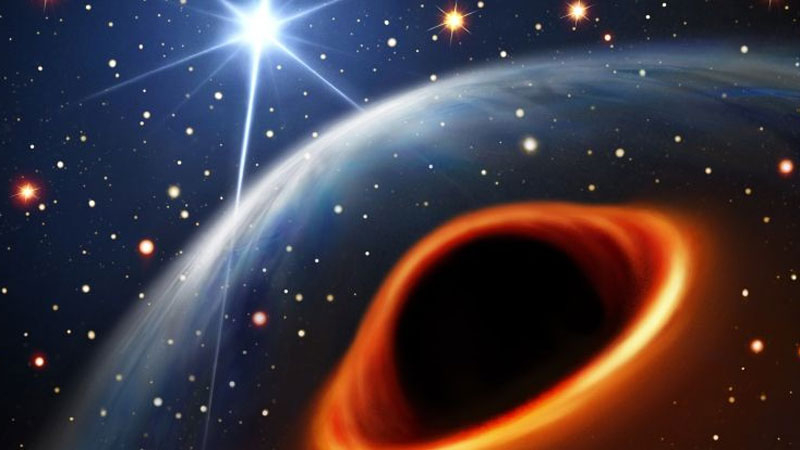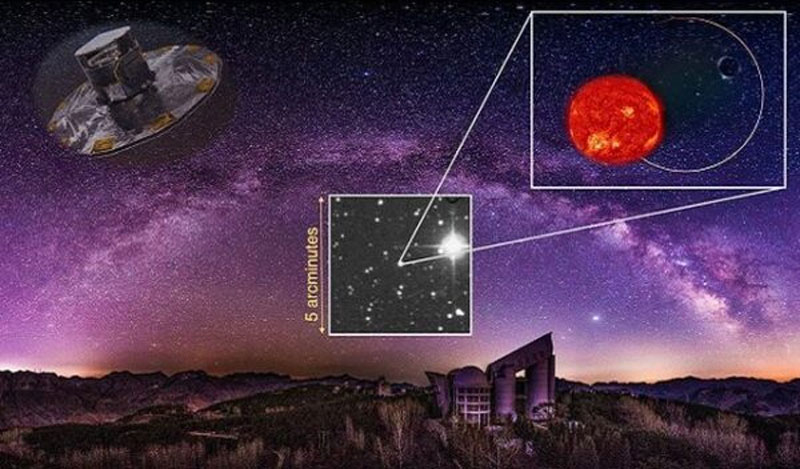A group of Chinese scientists published a paper in Nature reporting the discovery of a rare stellar-mass black hole candidate. An object with a mass of 3.6 solar is located at a distance of 5825 years from Earth. Less than a dozen similar candidates have been found. The discovery could answer many questions about extremely low-mass black holes that scientists may simply not have learned to detect yet.

An artist’s impression of a stellar mass black hole. Image source: Daniëlle Futselaar/artsource.nl
Chinese scientists used data from the European astrometric satellite Gaia to search for exotic objects. The satellite collects data on the speed and direction of movement of stars in our galaxy and slightly beyond. This will make it possible to create the most complete three-dimensional dynamic map of the Milky Way, which has already become a source of valuable data about distant stars and systems.
In particular, a group of researchers discovered a red giant moving unusually across the sky, which received the identifier G3425. A star with a mass of 2.7 solar in 880 days described an almost perfect circle in the sky around a certain center of mass. Scientists re-analyzed the found object with their own instruments and did not find any detectable source of radiation near the center of mass – an ordinary star or a neutron star. There is only one answer – there is a black hole of stellar mass, the calculations of which define the object as 3.6 solar masses.
According to generally accepted theory, white dwarfs cannot be heavier than 1.4 solar masses, and neutron stars cannot exceed 2.3 solar masses. Anything heavier must collapse under the influence of gravity and become a black hole. The problem is that very few candidates for the role of stellar-mass black holes have been discovered. To be fair, it must be said that such objects are difficult to detect. They exert a very weak gravitational effect on their partners so that it can be distinguished by our instruments. Also, such objects are not voracious due to their small size, which makes them difficult to detect in the X-ray range, when matter falls into a black hole and emits.

Finding objects like G3425 is extremely valuable for understanding the evolution of black holes. At the same time, she leaves questions. For example, the circular orbit of a red giant, in theory, should not have been preserved in a binary system, one of the stars of which exploded in a supernova and turned into a black hole. The second star would either be torn away, or its orbit would be greatly elongated. However, ideal discoveries happen even less often. All that remains is to observe and look for similar things, so that later, using statistical analysis methods, we can get closer to the truth.